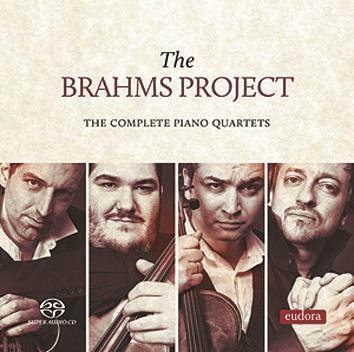
The Strad Issue: December 2017
Description: Splendid Spanish musicians share their passion for Brahms
Musicians: The Brahms Project: Josep Colomé (violin) Joaquín Riquelme (viola) David Apellániz (cello) Enrique Bagaría (piano)
Works: Brahms Piano Quartets: no.1 in G minor op.25, no.2 in A major op.60, no.3 in C minor op.60
Catalogue Number: EUDORA EUD1701 (2CD)
The Sala Mozart in Zaragoza is a large, modern symphonic hall, but these recordings (in studio conditions) on the Spanish Eudora label catch the atmosphere of suggestion that is proper to Brahms’s chamber music. According to the booklet essay, these four musicians came together as friends with a shared passion for Brahms, and it is this aspect of collegiality that is most attractive about the set as a whole.
The concertante element of the G minor Quartet may be somewhat underplayed – pianist Enrique Bagaría takes care not to overwhelm his colleagues even in the ‘Gypsy Rondo’ finale – but the comparative restraint of their collective approach pays off elsewhere. The key of A major provides a sunny, outgoing tonality for Brahms, and the Second Quartet stands in relation to the G minor in the same way as the D major Second Symphony does to the C minor First: moving up a key unlocked all the knots in the spine of his creative thought.
The long first movement of the Second is paced acutely, with the kind of steady, contented restraint that an experienced walker takes at the start of a day’s climb. There is an uncanny suggestion of a clarinet in the closely matched timbres of piano and Joaquín Riquelme’s viola in the long-limbed opening theme of the Poco Adagio: at similar tempos, the Nash Ensemble’s account on Onyx offers many hushed beauties, but I am no less drawn to the power in reserve held by these fine Spanish musicians. Cellist David Apellániz shines in the long cantabile of the C minor Quartet’s Andante, which is otherwise a much pithier work, and knitted together here from its disparate origins with persuasive power and belief in the awkward corners and sudden outbursts that are so characteristic of its creator.
PETER QUANTRILL











































No comments yet